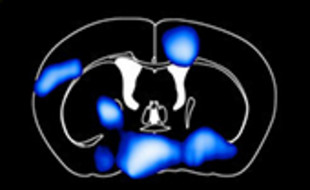A high-fat diet of three days in mice leads to a reduction in the amount of glucose that reaches the brain. This finding was reported by a Research Group led by Jens Brüning, Director at the Max Planck Institute for Metabolism Research in Cologne and associated DZD partner. The mouse brain restored its glucose level after four weeks.
Responsible is the protein GLUT-1, which is the most important glucose transporter at the blood-brain barrier: Possible triggers for the reduction of the GLUT-1 transporter are free saturated fatty acids.
The brain responds to compensate its lack of energy. Specialized cells in the immune system produce the growth factor VEGF, which induces the production of GLUT-1. After four weeks glucose levels of the mice brain are normalized.
If there is a lack of VEGF and the fat uptake remains high, the brain provides itself with glucose at the cost oft he rest of the body. It stimulates the body’s appetite for sweets and prevents the glucose uptake in muscels and fat. The cells in the musculature become resistent to insulin, which normally regulates the glucose uptakte in these cells. This may lead to the development of diabetes.
Original publication
Brüning Jens C et al., Myeloid-Cell-Derived VEGF maintains brain glucose uptake and limits cognitive impairment in obesity. doi: 10.1016/j.cell.2016.03.033. Cell 2016
Link to the publication
http://www.cell.com/cell/abstract/S0092-8674%2816%2930331-2
FigureCross-section through the brain of a mouse: regions with reduced uptake of glucose after three days of a high-fat diet© MPI f. Metabolism Research

